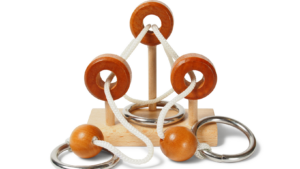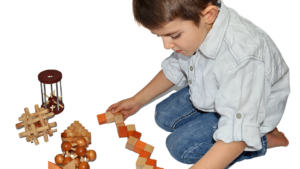Ever found yourself captivated by a complex riddle or a perplexing puzzle? You’re not alone. Brain teaser puzzles have long been a source of fascination, providing a delightful mix of entertainment and mental exercise. They’re not just for fun, either. These intricate challenges offer tremendous benefits for cognitive development and brain health.
From Sudoku to Rubik’s Cubes, brain teasers come in a myriad of forms. Each one is a labyrinth of complexity waiting to be solved, a testament to the human brain’s incredible problem-solving abilities. So, whether you’re a seasoned puzzle enthusiast or just dipping your toes into this intriguing world, you’re in for an exciting journey of discovery and intellectual stimulation. Stay tuned as we delve into the captivating realm of brain teaser puzzles.
Brain Teaser Puzzles

Brain teaser puzzles have an alluring history that intricately entwines with human civilization. They’ve been key elements of intellectual advancement, continually stimulating the human mind for centuries.
In the grand scheme of human history, it’s not that long ago when puzzles were strictly physical, meaning you needed something tangible, such as pieces of a jigsaw puzzle or a Rubik’s cube. As the digital age dawned, puzzles made a smooth transition. They seamlessly moved from physical objects to digital screens in the form of online brain teasers and mobile gaming apps.
Digital puzzles possess an allure akin to their physical counterparts – they ignite cognitive function, pose challenges, and provide an engaging medium for learning. Virtual reality and augmented reality took this a notch higher, with immersive 3D puzzles.
Brain Teasers in Ancient Civilizations
Historically, brain teasers find roots in ancient civilizations. The Greeks, Egyptians, and Chinese used them for both entertainment and sacred purposes. They believed these cognitive challenges helped increase problem-solving skills and promoted logical thinking among individuals in their societies.
The ancient Chinese puzzle Tangram, a type of dissection puzzle, is a shining example. The puzzle consists of seven flat shapes, which are put together to form different shapes without overlapping. Another example from the majestic Indus Valley Civilization is the ancient game of “Pachisi”, also known as Ludo now, which engages strategic thinking and planning.
From our ancestors to the modern-day, brain teaser puzzles continue to advance, evolving to suit the technological capabilities and cognitive expectations of the times.
Importance and Benefits of Brain Teaser Puzzles

The wide-ranging utility of brain teaser puzzles spans beyond entertainment, with significant impacts on cognitive development and problem-solving abilities, among other benefits.
Puzzles play a pivotal role in cognitive development. Engaging with them stimulates the brain, leading to improved memory and better attention spans. By challenging the brain to spot patterns and decipher complex structures, puzzles enhance cognitive agility. Take Sudoku, for example. This numerical puzzle aligns well with cognitive growth objectives. It lays emphasis on pattern recognition, a key element in enhancing cognitive development.
Brain teaser puzzles offer an excellent avenue for honing problem-solving skills. They compel the solver to think critically, making plans and adjusting them as new information is revealed. The Rubik’s Cube offers a perfect illustration.
Common Types of Brain Teaser Puzzles

Diversified in their design, functionality, and challenge level, an array of brain teaser puzzles saturates the market today. From traditional riddles to digitized Sudoku, these puzzles cater to varying interests and cognitive capacities.
Often verbal or written, riddles pose questions or statements that require thoughtful consideration for solutions. Often draped in metaphorical or allegorical language, a riddle, such as “What is so fragile that saying its name breaks it?” (Answer – Silence) intrigues the intellect, stoking imaginative thinking.
On the other hand, jigsaw puzzles, hailing from the 18th-Century European cartography, demand oodles of spatial and visual analysis. Terms like ‘edge piece,’ ‘header,’ ‘knob,’ and ‘gap’ dot a jigsaw puzzler’s lexicon. Jigsaw puzzles can range from the simple 10-piece versions for children to an overwhelming 40,320-piece behemoth like Ravensburger’s “Memorable Disney Moments” puzzle.

